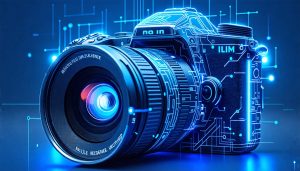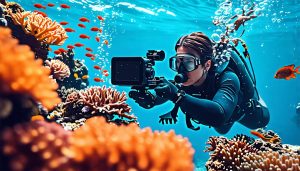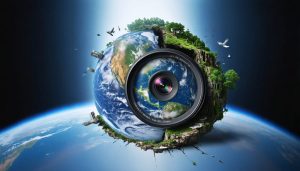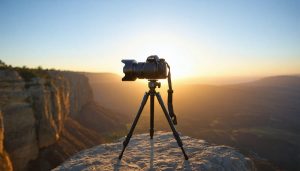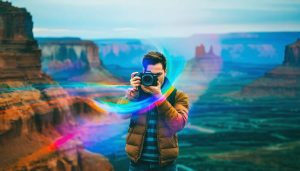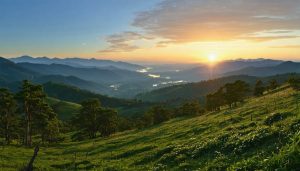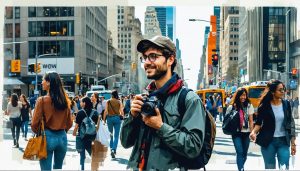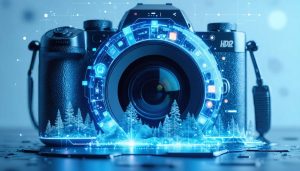
Harness the power of artificial intelligence to revolutionize your photography with AI-enabled cameras, which use advanced algorithms to transform the lens and optimize every shot. AI photography empowers both novice and professional photographers by automating complex settings, enhancing image quality, and unlocking limitless creative potential. From intelligently adjusting exposure and focus to applying artistic filters and effects, AI handles the technical aspects so you can concentrate on capturing the perfect moment. Embrace this cutting-edge technology and experience a new era of photography where AI is your creative partner, elevating your skills and inspiring you to push the boundaries of what’s possible behind the lens.
Understanding the Basics of AI Photography
What is Artificial Intelligence?
Artificial Intelligence, or AI, is a branch of computer science that focuses on creating intelligent machines that can think and learn like humans. AI systems can analyze data, recognize patterns, and make decisions based on that information. From virtual assistants like Siri and Alexa to self-driving cars, AI is revolutionizing various industries. In photography, AI is being used to enhance image quality, improve camera performance, and even assist with composition and post-processing. By leveraging machine learning algorithms, AI-powered cameras and software can automatically adjust settings, recognize subjects, and apply creative effects, making it easier for photographers to capture stunning images.
How AI Enhances Cameras and Photos
AI is revolutionizing the way cameras capture and process images, enhancing photography in exciting ways. One key application is scene recognition, where AI algorithms analyze the content of a scene and automatically adjust camera settings for optimal results. For example, Sony’s latest Alpha cameras use AI-powered Real-time Tracking to recognize and focus on subjects like people, animals, or vehicles, ensuring sharp focus even with moving targets.
AI is also transforming autofocus systems, making them faster, more accurate, and better at tracking subjects. Canon’s EOS R5 and R6 mirrorless cameras boast Deep Learning AF, which uses machine learning to improve face and eye detection for humans and animals. This AI-driven autofocus enables photographers to capture crisp, perfectly focused shots even in challenging situations.
Image processing is another area where AI shines. Computational photography techniques, like Google’s Night Sight mode on Pixel smartphones, use machine learning to merge multiple exposures and intelligently reduce noise, producing stunning low-light photos that were once impossible with small sensors. Apple’s Deep Fusion technology, introduced in the iPhone 11, harnesses AI to analyze and optimize photos pixel-by-pixel, delivering exceptional detail and texture.
AI-powered features extend beyond still photography, too. In video, AI can facilitate advanced stabilization, smooth focus transitions, and even automatic editing. GoPro’s HyperSmooth stabilization, for instance, employs AI to predict and compensate for camera motion, resulting in incredibly smooth footage without bulky gimbals.
As AI continues to advance, we can expect even more groundbreaking features that simplify the technical aspects of photography, allowing creators to focus on their vision. From intelligent scene optimization to AI-assisted composition guidance, the future of photography is undoubtedly intertwined with artificial intelligence, promising to make the art form more accessible, intuitive, and powerful than ever before.

Key Benefits of AI Photography
Improved Image Quality and Composition
AI-powered cameras utilize advanced algorithms to automatically optimize key settings for each shot, helping users consistently capture high-quality images with minimal effort. By analyzing the scene in real-time, AI can intelligently adjust exposure, ensuring that photos are properly lit and free from overexposed or underexposed areas. This is particularly useful in challenging lighting conditions, such as backlit subjects or high-contrast scenes.
AI also excels at achieving precise focus, even when dealing with fast-moving subjects or complex compositions. By quickly identifying and tracking the main subject, AI-assisted autofocus systems can maintain sharp focus throughout the frame, resulting in crisp, clear images. Some AI cameras even offer intelligent scene recognition, automatically selecting the most appropriate essential settings based on the detected scene type, such as landscape, portrait, or sports.
Moreover, AI can assist with framing and composition, using techniques like rule of thirds and leading lines to suggest optimal placement of subjects within the frame. This guidance helps users create more visually appealing and balanced images, even if they lack extensive photography knowledge. By handling these technical aspects, AI allows photographers to focus more on creativity and capturing the perfect moment.
Intelligent Editing and Enhancement
AI-powered editing tools are revolutionizing the way photographers approach post-processing. These intelligent features make it easier than ever to enhance your images, saving time and unlocking new creative possibilities. One of the most impressive capabilities is object removal – with just a few clicks, you can seamlessly erase unwanted elements from your photos, whether it’s a stray branch, a distracting sign, or even a photobomber in the background. This allows you to create cleaner, more focused compositions without the tedious manual work.
Another game-changing AI editing feature is style transfer. This technology analyzes the artistic characteristics of a reference image, such as a famous painting or a specific photographic style, and applies those qualities to your own photo. Imagine instantly transforming your landscape shot to mimic the brushstrokes of Van Gogh or the moody tones of a classic film. AI style transfer opens up a world of experimentation and creative expression, allowing you to infuse your images with new artistic flair.
These AI-powered tools streamline the post-processing workflow, making complex edits more accessible to photographers of all skill levels. By handling time-consuming tasks and offering innovative creative options, AI enables you to focus on crafting your vision and bringing your photographic stories to life.


Expanded Creative Possibilities
The advent of AI in photography has unleashed a world of expanded creative possibilities for photographers. One exciting application is computational photography, where AI algorithms enhance and manipulate images in real-time. This allows for features like improved low-light performance, HDR imaging, and even the ability to adjust focus and depth of field after a photo has been taken.
AI is also revolutionizing low-light photography. By intelligently combining multiple exposures and applying noise reduction, AI can produce stunning images in dimly lit environments that were previously impossible to capture without specialized equipment.
In the realm of artistic effects, AI is empowering photographers to push the boundaries of creativity. With AI-powered filters and style transfer techniques, photographers can instantly transform their images into masterpieces reminiscent of famous painting styles or apply unique, eye-catching effects with just a few taps.
As AI continues to evolve, it’s clear that it will play an increasingly vital role in expanding the creative toolset available to photographers. From overcoming technical limitations to inspiring new forms of artistic expression, AI is ushering in an exciting era of innovation in the world of photography.
Getting Started with AI Photography
Choosing AI-Enabled Cameras and Software
When choosing AI-enabled cameras and software, consider your budget, skill level, and photography goals. Entry-level photographers may want to start with affordable AI-powered smartphone apps like Adobe Lightroom or Pixlr, which offer features like automatic adjustments, filters, and object removal. More advanced photographers might invest in mirrorless or DSLR cameras with built-in AI capabilities for improved autofocus, scene recognition, and low-light performance. Look for models from reputable brands like Sony, Canon, or Nikon that fit your gear essentials and budget.
When evaluating AI photography software, consider factors like ease of use, compatibility with your camera, and the specific AI features offered. Popular options include Skylum Luminar AI, Topaz Labs’ suite of plugins, and ON1 Photo RAW. Many offer free trials, so test drive a few to find the best fit for your workflow. Keep in mind that while AI can enhance your photos, it’s not a complete replacement for foundational photography skills. Aim to strike a balance between leveraging AI’s benefits and honing your own creative eye and technical expertise.
Experimenting and Learning
Experimenting with AI photography is the best way to learn its capabilities and how it can enhance your creative process. Don’t be afraid to dive in and play with the AI features in your camera or photo editing software. Start by shooting in various conditions and scenes to see how the AI adapts. Review the results, noting what works well and what could be improved. Online resources like photography forums, tutorials, and manufacturer guides provide valuable tips and techniques for getting the most out of AI. With practice and exploration, you’ll develop a feel for when and how to leverage AI effectively in your photography workflow.
Conclusion
In conclusion, AI photography is an exciting frontier that is transforming the way we capture and create images. From intelligent autofocus and auto-exposure to advanced computational photography techniques, AI is empowering photographers of all skill levels to achieve stunning results with greater ease and consistency. As camera technology continues to evolve, we can expect AI to play an increasingly vital role in enhancing image quality, enabling new creative possibilities, and simplifying complex tasks.
Whether you’re a seasoned professional or a passionate hobbyist, embracing AI photography can elevate your craft to new heights. By understanding the principles behind this technology and learning how to harness its potential, you’ll be well-equipped to create images that captivate, inspire, and push the boundaries of what’s possible. So don’t be afraid to explore the world of AI photography – your most amazing shots may be just a click away.

